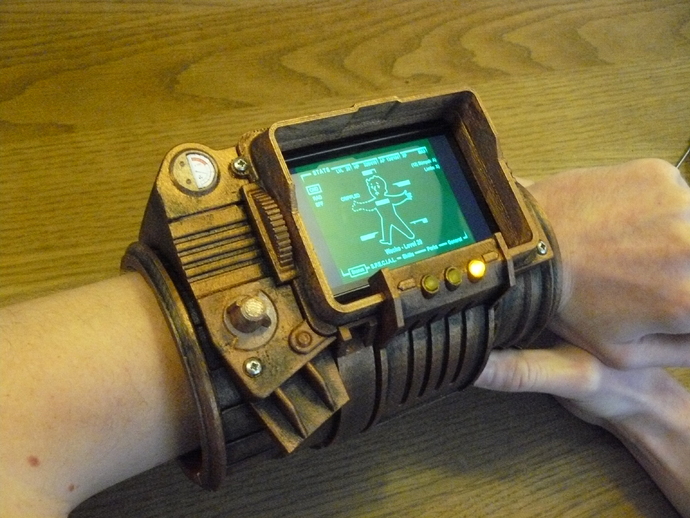
3D printed Pip-Boy 3000 replica surrounding a smartphone. Courtesy of Thingiverse.
Latest News
July 8, 2013
In the course of my diligent efforts to keep you good people up to date on the state of additive manufacturing (AM), I come across many interesting news items. I’ll gather them up every so often and present them in a Rapid Ready Roundup (like this one). You can find the last Roundup here.
We’ll start today’s Roundup with some literature. Beginning this fall, Mary Ann Liebert publishing will produce a quarterly peer-reviewed journal focused on AM titled 3D Printing and Additive Manufacturing. Editor-in-Chief for the new journal will be Dr. Hod Lipson, the Director of Cornell University’s Creative Machines Lab at the Sibley School of Mechanical and Aerospace Engineering.
The journal will feature original articles, exclusive interviews with industry professionals, commentaries, opinion pieces, industry reports, a debate section, webinars, videos, and podcasts. This is another positive milestone for AM. Anything that spurs interest or continued development in AM can only good for the technology.
Next up, it seems as though Google Glass can add 3D scanner to its list of features. Blogger Todd Blatt used his handy new tech gadget to record images of a bust of Marcus Aurelius while visiting the Walters Art Museum. By simply walking around the bust and muttering “take a picture,” Blatt was able to capture enough data for Autodesk’s 123D Catch to construct a 3D image of the sculpture.
While that’s undoubtedly a cool use for Google Glass, I don’t think it’s going to help with the hysteria surrounding privacy issues concerning Google’s newest toy. Along with bans on using the device while driving, I’d be shocked if Glass wasn’t banned at locations where its image capture abilities could be used to swipe proprietary images. Still, a hands-free scanner could have its uses.
Moving on, artist Ioan Florea is using AM to create 3D paintings. Drawing inspiration from nanotech, Florea builds 10 x 8 ft. works of art that combine AM-built pieces with more traditional paintings. The artist begins, appropriately enough, by producing a prototype of the finished piece with a 3D printer. From there he uses lightweight materials to assemble the final piece, with the intention of keeping the weight under 100 lbs.
According to the artist, most people’s initial reaction to his work is the desire to touch the pieces, bringing a tactile element to fine art. Florea’s paintings will be on display through May 2015 at the South Bend Museum of Art. You can find an image gallery of Florea’s art here.
Last, if you’ve played Fallout 3, you’ll be familiar with the idea of the Pip-Boy 3000. The fictional all-in-one device acts as radio, information guide, radiation detector and much more; the Pip-Boy is basically an amped up smartphone mounted on a wrist display. If you ever wished you could have your own Pip-Boy, now’s your chance.
A user submitted file on Thingiverse allows people to 3D print a hollow Pip-Boy. In place of a static screen, the space is left open for owners to insert a smartphone, or any other device that will fit. Some assembly is required, and you’ll have to paint the thing yourself, but it’s fairly likely that you’ll be the only one around with their very own Pip-Boy 3000.
Readers may remember this year’s April Fools joke of a Play-Doh 3D printer. Apparently Hyrel 3D found the idea more intriguing than hilarious, and managed to put together a system that will actually print in Play-Doh. Check out the video below for a demonstration.
Sources: Yahoo, Thingiverse, Tod Blatt, News-Medical








